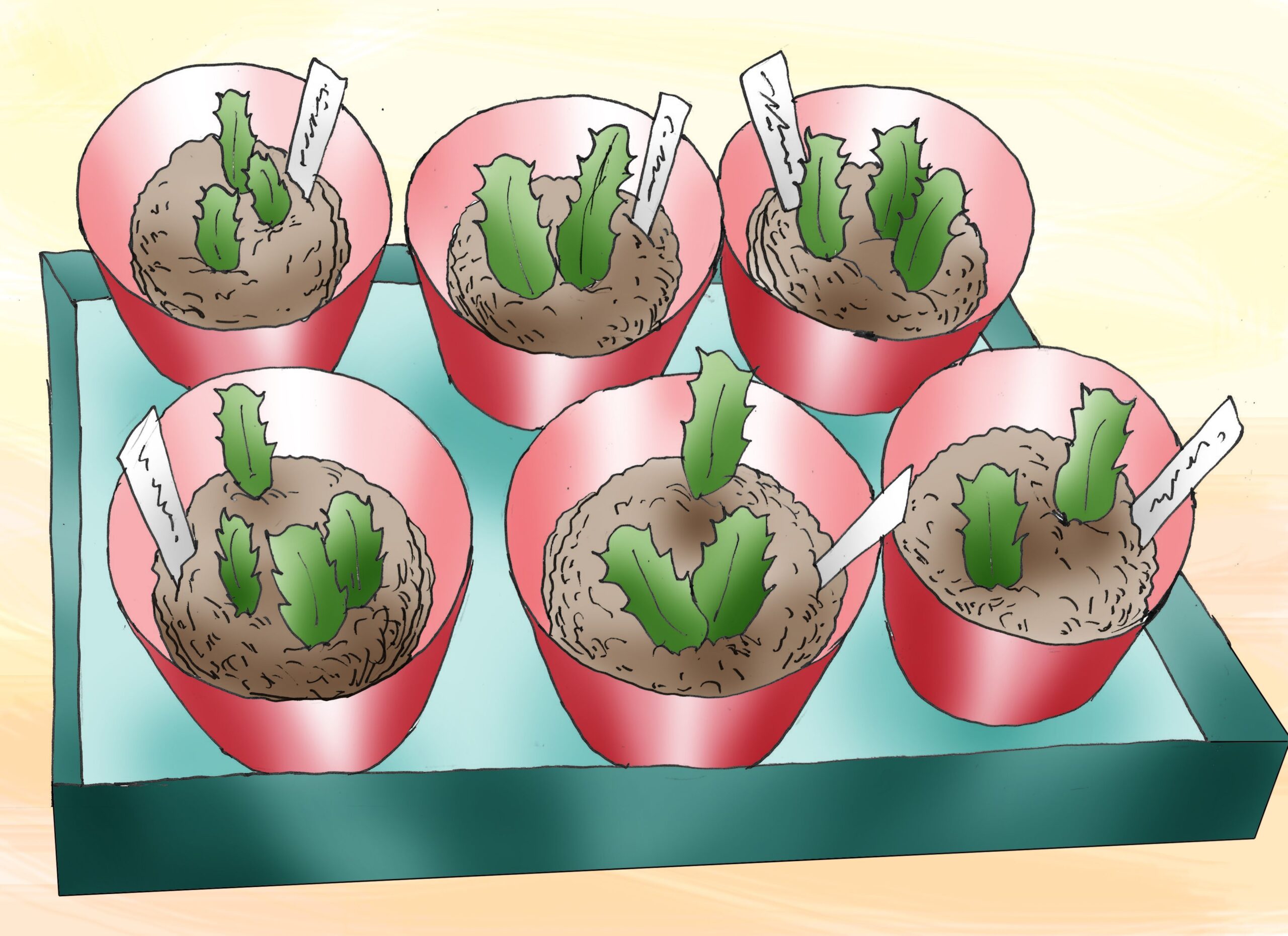Christmas cacti, also known as Schlumbergera, are cherished for their vibrant blooms and unique foliage. Native to the tropical forests of Brazil, these plants bring an element of joy and color, especially during the winter months. This guide will take you through the comprehensive steps on how to start and nurture a Christmas cactus, ensuring it flourishes in your home for many years to come.
Understanding the natural habitat of the Christmas cactus is essential for replicating the ideal environment it needs to thrive. Unlike their desert-dwelling cousins, Christmas cacti prefer a humid atmosphere with filtered light. They grow in the shade beneath trees in their natural habitat, making them well-suited for indoor conditions when given the right care. With attention to watering, light, soil, and propagation, your Christmas cactus can become a thriving centerpiece in your home.
—
Creating the Optimal Environment for Your Christmas Cactus
Temperature Preferences and Humidity
Christmas cacti thrive in moderate temperatures. An ideal range is between 60°F to 70°F (15°C to 21°C) during the day and slightly cooler at night. It’s vitally important to avoid exposing them to drafts or extreme temperature fluctuations. Additionally, these plants flourish in higher humidity levels, which can be achieved by placing a humidity tray filled with water and pebbles near your cactus or by misting the plant occasionally.
Lighting Requirements
Proper lighting is crucial for the health of your Christmas cactus. Unlike many succulents, they prefer indirect sunlight. Placing the plant near a north or east-facing window is optimal, but make sure to shield it from harsh midday sun that can scorch the leaves. If natural light is insufficient, consider using fluorescent grow lights for 12 to 14 hours a day to mimic the bright yet filtered light of their native environment.
—
Choosing the Right Soil and Container
Soil Composition for Success
When selecting soil for your Christmas cactus, it is imperative to opt for a well-draining potting mix. A combination of potting soil, peat moss, and perlite works well to create the necessary aeration and drainage. Avoid heavy garden soil, as it retains too much moisture and can lead to root rot, a common affliction in Christmas cacti.
Container Selection
Select a pot with drainage holes to facilitate excess water to escape, thus maintaining the health of the plant’s roots. Clay pots are preferable due to their porous nature, which helps in preventing overwatering. Ensure the container is proportionate to the cactus size; too large a container can result in excessive moisture retention, while too small can restrict growth.
—
Watering and Fertilization Practices
Establishing a Watering Routine
Watering the Christmas cactus requires a careful balance. These plants enjoy moist soil but should never be waterlogged. A good rule of thumb is to water when the top inch of soil feels dry to the touch. During the winter months, when the plant enters a semi-dormant phase, reduce watering. Overwatering during this time can lead to disastrous outcomes for your cactus.
Nourishing Your Plant
Fertilization is also a critical factor in keeping your Christmas cactus vibrant. Utilize a balanced, water-soluble fertilizer designed for cacti and succulents every four to six weeks during the growing season, typically from spring to early autumn. In the winter months, refrain from fertilizing to allow the plant to rest. This fertilization strategy supports strong growth and encourages abundant blooming.
—
Propagation Techniques: Expanding Your Cactus Collection
Cutting Propagation Method
Propagating your Christmas cactus is an exciting process. To do this, gently wiggle and remove a segment of the stem (about two to three segments long) from the parent plant. Allow the cut end to callous over for at least 24 hours. This step is crucial to prevent rot. Subsequently, place the cutting in a well-draining soil mix, ensuring it remains upright. Water sparingly and keep in a warm, indirect light area until roots develop, which usually takes a few weeks.
—
Achieving Beautiful Blooms: Environmental Cues
Inducing Flowering
To encourage your Christmas cactus to bloom, it’s important to understand its specific needs. The plant typically requires a period of darkness and cooler temperatures to trigger flower development. About six weeks before the expected blooms—usually around late autumn to early winter—place your cactus in a spot where it receives 12 to 14 hours of darkness each day. This manipulation of light, coupled with a brief period of cooler temperatures, can effectively induce a spectacular display of vibrant flowers.
Caring for Blooms
Once your cactus starts to bloom, ensure it remains in a more stable, warmer environment. Continue providing adequate humidity and avoid moving it frequently, as this can cause buds to drop. The blossoms, available in a range of colors from white to vibrant pinks and reds, can last for several weeks with proper care.
—
In Summation
Starting and nurturing a Christmas cactus is a rewarding venture that enhances indoor spaces with its stunning floral display. By understanding its environmental needs, implementing effective watering and fertilization practices, and mastering propagation techniques, your Christmas cactus can provide joy and beauty year after year. With a bit of patience and care, you’ll soon find yourself with a thriving plant that stands as a testament to your gardening skills and dedication.





Leave a Comment